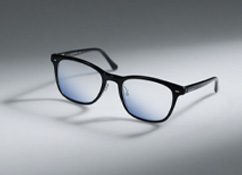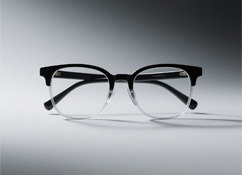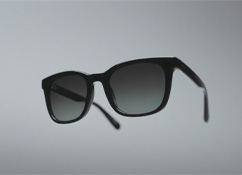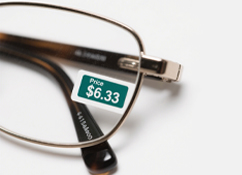Say Goodbye to Nose Dents: How to Choose Lightweight, Durable Glasses Frames
Ever finish a workday with red marks on your nose from your glasses? Or find yourself constantly pushing them up because they slide down your ears? It’s not your fault—chances are, the frame material is to blame. The right material can make your glasses feel like you’re not wearing them at all, while the wrong one? Ouch. Let’s break down the best frame materials for comfort, durability, and style.
Why Frame Material Matters
Your glasses’ material affects everything: how light they feel on your nose, whether they irritate your skin, how long they last, and even how they look. If you’re tired of nose pressure, slipping temples, or frames that rust after a little sweat, picking the right material is key. Let’s dive into the top options.
Common Glasses Frame Materials: Pros, Cons & Who They’re For
Alloy Frames: Budget-Friendly, but With a Catch
Alloy frames (mixes of metals like nickel or copper) are popular for a reason—they’re easy on the wallet and come in tons of styles, from sleek to bold.
What’s great: Affordable, lots of colors and designs (easy to match your style), and easy to shape into trendy looks.
The downside: They can irritate sensitive skin (nickel in alloys often causes allergies). Plus, sweat can make them rust or chip paint over time.
Best for: People on a budget who love switching up their style—and don’t have metal allergies.
Titanium Frames: Lightweight Champions
Titanium is a favorite for anyone who prioritizes comfort. These frames are incredibly light—you might forget you’re wearing them.
What’s great: Ultra-light (no nose pressure!), rust-proof, sweat-resistant, and hypoallergenic (no red, itchy skin). They’re also super durable—great for daily wear.
The downside: They’re trickier to make, so they cost more than alloy or plastic frames.
Best for: Anyone who hates heavy glasses, has metal allergies, or wants frames that’ll last years (and doesn’t mind splurging a bit).
Acetate Frames: Retro Style, Rich Texture
Acetate (a type of plastic) frames are all about that vintage vibe—think bold colors and unique patterns.
What’s great: Super scratch-resistant, with a smooth, high-quality feel. They come in one-of-a-kind designs you won’t find in metal frames.
The downside: They’re heavier than titanium or TR frames, which can leave nose marks if you wear them all day. They’re also less flexible—bend them too much, and they might crack.
Best for: Retro fashion lovers who want standout frames and don’t mind a little extra weight.
TR Frames: Flexible “Workhorses” for Active Lifestyles
TR (short for thermoplastic rubber) frames are like the sporty, durable option—perfect if you’re always on the go.
What’s great: Super flexible (they’ll bounce back if you bend them), lightweight, and resistant to sweat or rust. They’re tough enough for workouts, kids, or clumsy moments.
The downside: They don’t have the same premium look as metal or acetate—more simple and functional.
Best for: Athletes, parents shopping for kids, or anyone who wants comfortable, budget-friendly frames that can keep up with their day.
FAQ: Choosing the Right Frame Material
Q: My nose gets sore easily—what’s the best material for me?
A: Go for titanium or TR frames—they’re the lightest and put the least pressure on your nose.
I have metal allergies—are there options?
A: Titanium is hypoallergenic, so it won’t irritate your skin. TR frames (plastic) are also a safe bet.
Do expensive frames last longer?
A: Not always, but titanium frames (which are pricier) are usually more durable than cheap alloy ones. Acetate can last too, but they’re heavier.
Final Tip: Try Before You Buy
No matter how great a material sounds, everyone’s face is different. What feels light to one person might feel heavy to another. Pop into an optical store and try on a few styles—pay attention to how they feel after 10 minutes. Your nose (and ears) will thank you!











